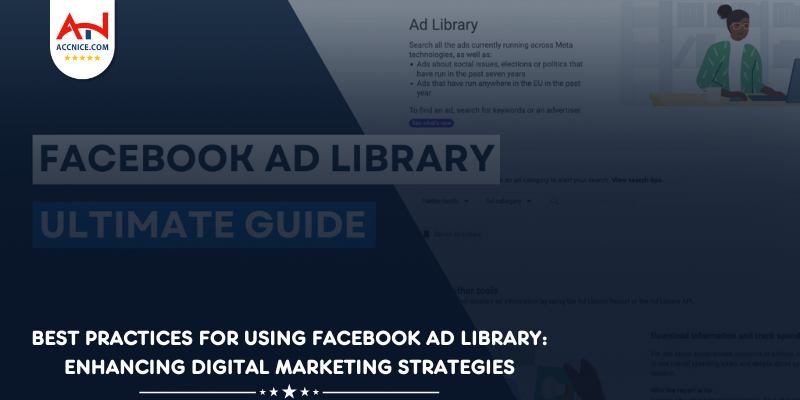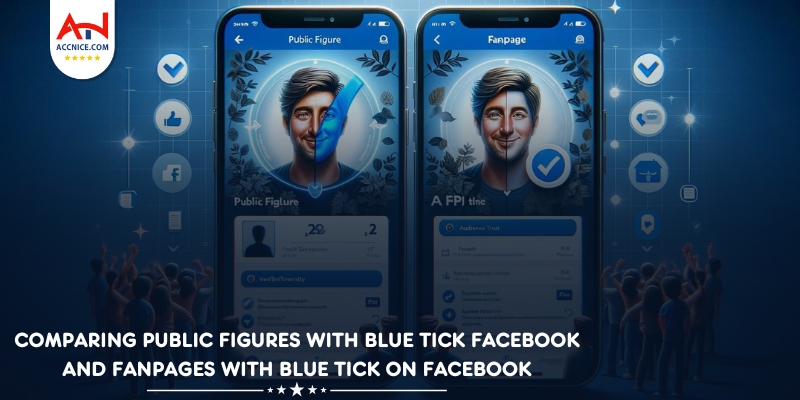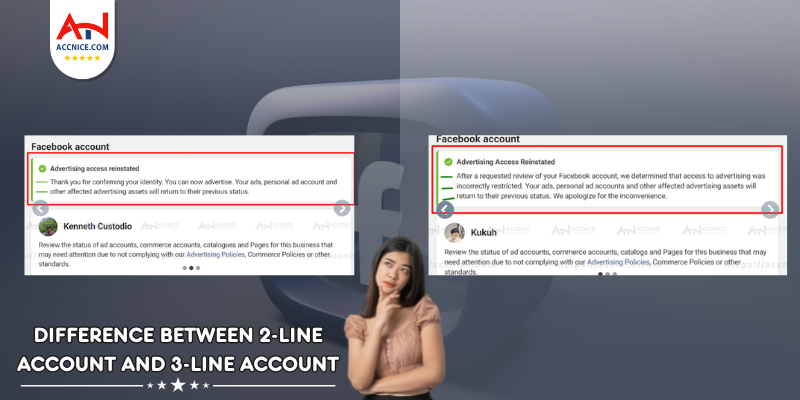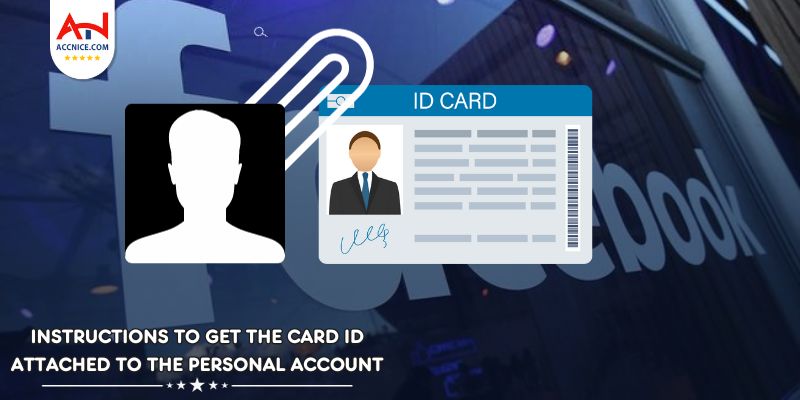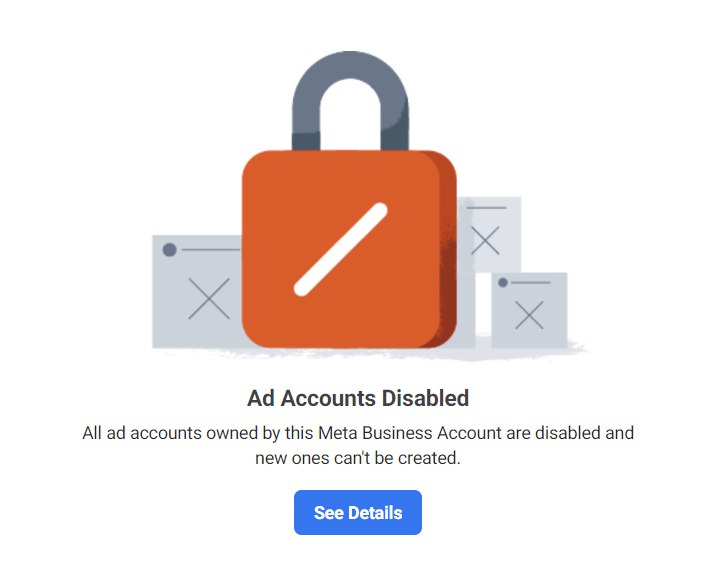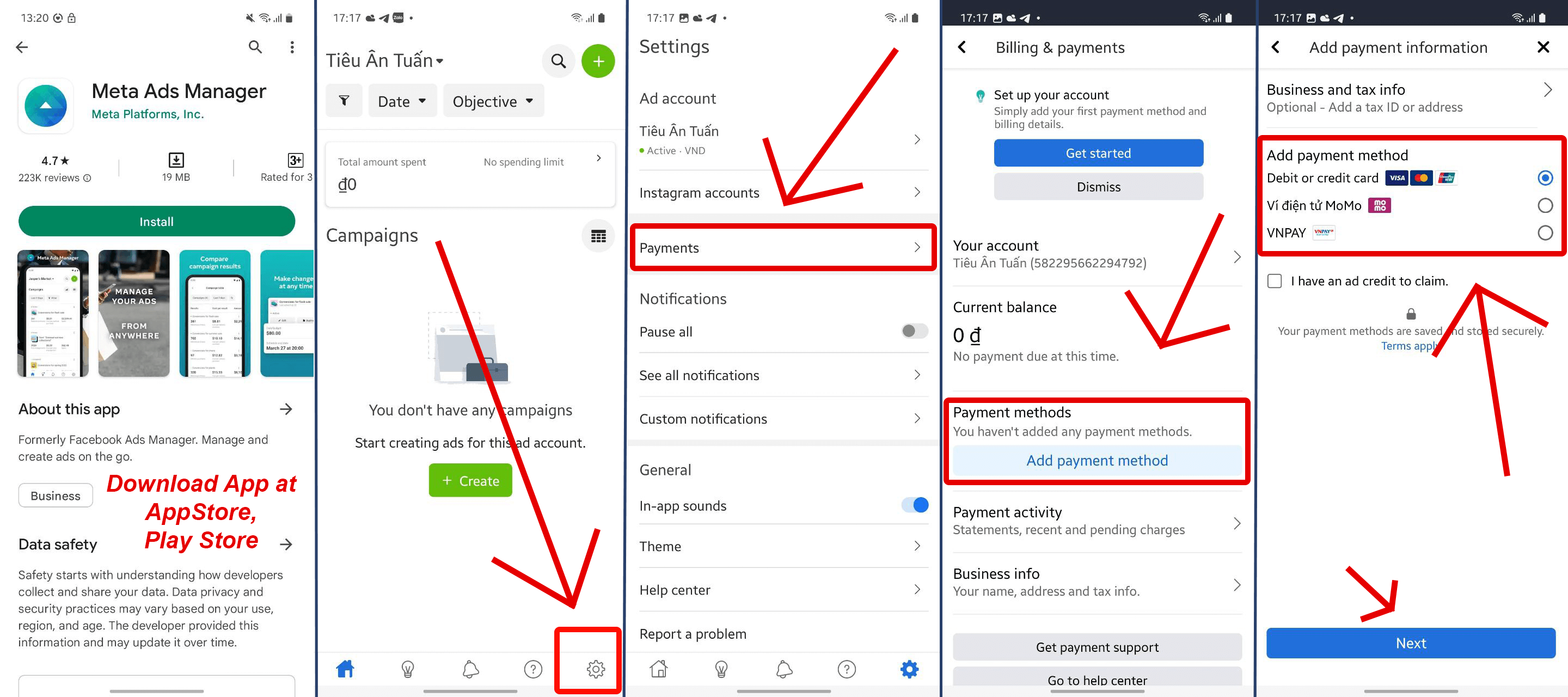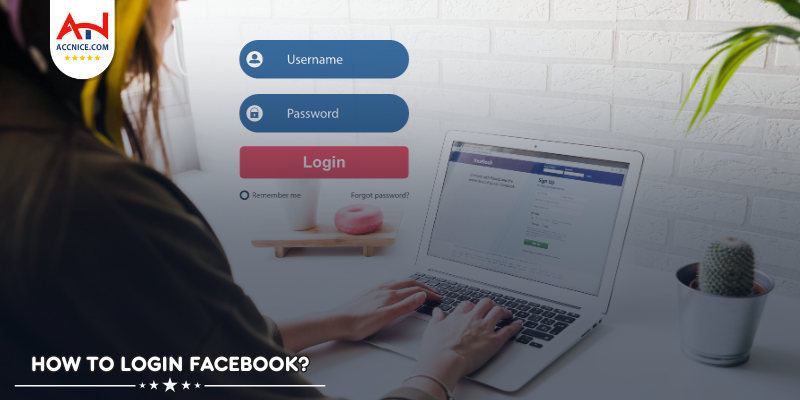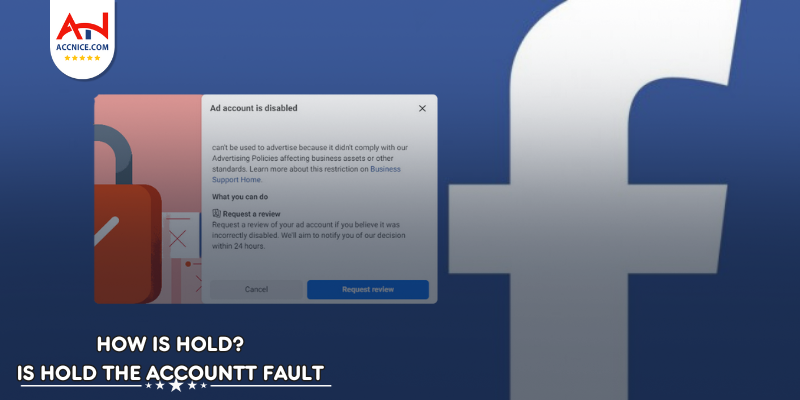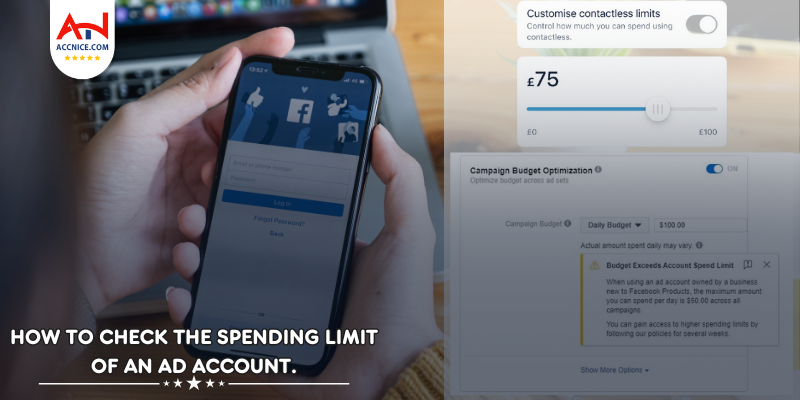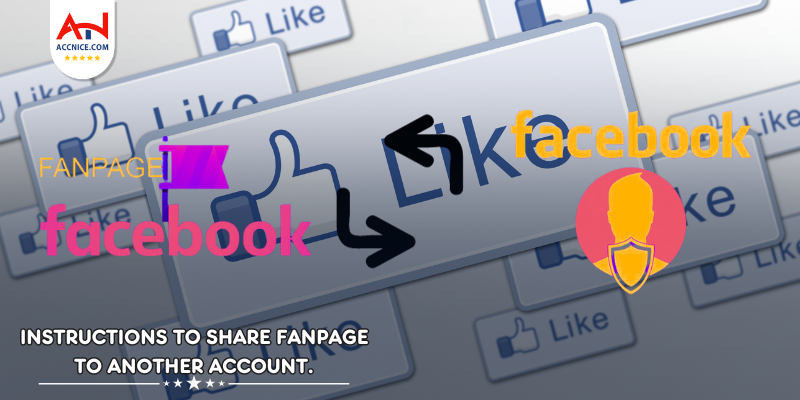Best Practices for Using Facebook Ad Library: Enhancing Digital Marketing Strategies
230 vỉew
Writing date: 2024-05-09 13:45:11

The Facebook Ad Library is a valuable resource for marketers looking to refine their digital marketing strategy. This transparency tool provides detailed information about all current and past ads running on Facebook and its related platforms. This article by Accnice
provides essential guidance on how to effectively use the Facebook Ad Library to boost marketing efforts, ensuring marketers can make informed decisions and stay ahead of the curve. their campaigns.
Introduction to Facebook Ad Library

1, Overview of Facebook Ad Library
The Facebook Ad Library is a transparency tool that Facebook has developed to allow users to view advertisements that are currently running or have been run in the past across its platforms. This initiative aims to enhance the transparency of advertising on Facebook and its associated platforms.
2, Key Features of Facebook Ad Library
- Public Access: Anyone can search the Ad Library for information on ads related to politics, elections, social issues, and more, as well as standard commercial ads.
- Comprehensive Data: It provides detailed information about each ad, including who funded the ad, the cost of the ad, the number of people reached, demographics of the audience, and the geographic locations where the ad was seen.
- Searchability: Users can search for ads based on various criteria, including keywords, advertisers, and time periods. This feature is particularly useful for researchers and marketers who are analyzing ad trends or campaign strategies.
- Archive of Political and Issue Ads: Ads that relate to politics or significant social issues are stored in the library for up to seven years, making it a valuable resource for historical advertising data and transparency.
3, Importance of the Ad Library
- Enhanced Transparency: By making information about ad spending and targeting public, the Ad Library helps ensure accountability, preventing misuse of the platform for misleading or harmful advertising.
- Resource for Competitor Analysis: Marketers can use the library to view competitors' advertising strategies, giving them insights into how similar businesses or political campaigns are engaging with their audiences.
- Tool for Research: Academics, journalists, and political analysts find the Ad Library a crucial resource for understanding the impact of social media advertising on public opinion, elections, and market trends.
The Facebook Ad Library is a significant step towards increasing transparency in digital advertising. By providing everyone from ordinary users to professionals with the ability to scrutinize the specifics of various ads, Facebook aims to foster a more informed user base and a more accountable advertising environment. This initiative not only helps regulate the quality and integrity of advertisements but also empowers users by making advertising data openly accessible.
Why Use the Facebook Ad Library?

The Facebook Ad Library serves as a powerful tool for multiple stakeholders in the digital ecosystem, from everyday consumers to marketers and political analysts. Here are a few compelling reasons why various users might want to utilize the Ad Library:
1, Competitor Analysis
- Strategic Insights: Marketers can analyze the advertising strategies employed by competitors, including their creative approaches, targeted demographics, and spending patterns. This information can help companies refine their own strategies to stay competitive.
- Benchmarking Performance: By observing how similar ads perform, marketers can benchmark their own campaigns against industry standards and competitor outcomes.
2, Ad Transparency
- Consumer Trust: Transparency in advertising builds trust with consumers. When consumers can see who is behind an ad and how much was spent on it, it can alleviate suspicions and foster a more transparent relationship between brands and their audiences.
- Regulatory Compliance: In political advertising, especially, transparency is crucial. The Ad Library helps ensure that political advertisers are held accountable, providing the public with visibility into who is trying to influence their opinions and votes.
3, Research and Analysis
- Market Trends: Researchers and analysts use the Ad Library to track advertising trends over time, including responses to different global events, shifts in marketing tactics, or changes in consumer behavior.
- Academic Studies: Academics studying the impacts of social media on public opinion, elections, and consumer behavior find the library a valuable repository of data that can be used to support empirical research.
4, Educational Resource
- Learning Tool: For students and new marketers, the Ad Library provides a real-world dataset to study advertising strategies, learn about market segmentation, and understand effective messaging and positioning.
5, Enhancing Public Knowledge
- Informed Public: By providing everyone access to advertising data, the Ad Library helps ensure the public is better informed about who tries to influence them with ads. This is particularly important in maintaining the integrity of democratic processes.
Using the Facebook Ad Library is beneficial not just for tracking competitors or regulatory compliance, but also for enhancing the overall transparency and trust in digital advertising spaces. It represents a significant step towards making digital advertising more open and accountable, which can help in fostering a healthier digital advertising landscape.
Best Practices for Utilizing the Ad Library

Utilizing the Facebook Ad Library effectively requires a strategic approach that leverages the vast amount of data available. Here are some best practices for making the most out of this tool:
1, Regular Monitoring
- Stay Informed: Consistently monitor the Ad Library to stay ahead of market trends and competitor moves. This will help you adapt your strategies in real time to match or outperform the competition.
- Alert Settings: Consider setting up alerts for specific competitors or keywords to receive updates when new ads are published. This keeps you proactive rather than reactive.
2, Analyze Ad Performance
- Benchmarking: Compare your ad performance against competitors by analyzing spend, reach, and engagement metrics. This helps identify areas where your campaigns can be optimized.
- Success Patterns: Identify patterns in successful ads, such as content type, call to action, or visual elements that resonate with your target audience. Implement similar strategies in your campaigns where appropriate.
3, Deep Dive into Targeting Strategies
- Audience Insights: Pay attention to the demographics and targeting criteria used by successful ads. These insights can inform your own targeting strategies to ensure better ad relevance and effectiveness.
- Geographical Performance: Analyze the performance of ads across different regions to tailor your geographical targeting strategies. This is especially useful for localized marketing efforts.
4, Creative Inspiration
- Ad Formats: Explore different ad formats (video, image, carousel, etc.) and creative styles used by leading brands to inspire your own creative endeavors.
- Innovation Tracking: Keep track of innovative uses of Facebook’s ad features, such as augmented reality ads or interactive polls, which can provide a competitive edge.
5, Compliance and Transparency
- Regulatory Compliance: Use the Ad Library to ensure your ads comply with the latest advertising standards and regulations, particularly in sensitive sectors like politics and health.
- Transparency Practices: Emulate transparency practices of leading brands to enhance trust and credibility with your audience. Show your commitment to ethical advertising by being open about your ad practices.
6, Learning and Development
- Educational Tool: Utilize the Ad Library as a learning resource to train marketing teams on effective advertising techniques and the importance of ad transparency.
- Case Studies: Develop internal case studies based on observations from the Ad Library to demonstrate successful strategies or cautionary tales of ad failures.
By following these best practices, marketers can turn the Facebook Ad Library from a mere repository of ads into a dynamic tool that enhances strategic decision-making, inspires creative marketing, and promotes an understanding of competitive landscapes. This not only improves the effectiveness of your advertising efforts but also helps in building a more informed and strategic marketing team.
How to Navigate and Use the Ad Library Effectively
Navigating and effectively using the Facebook Ad Library can provide valuable insights into the advertising landscape. Here’s a detailed guide to make the most of this resource:
Step 1: Accessing the Ad Library
- Direct Access: Visit the Facebook Ad Library page. You do not need a Facebook account to access publicly available information.
- Choose a Region: Select the country for which you want to view the ads. This is crucial for understanding localized advertising strategies.
Step 2: Searching and Filtering
- Keyword Search: Use specific keywords related to your industry, interests, or competitors to find relevant ads.
- Advanced Filters: Utilize filters to narrow down your search. You can filter by:
- Date Range: Look at ads within a specific timeframe to analyze recent trends or historical data.
- Ad Type: Filter by political, issue-based, or election-related ads, as well as standard commercial ads.
- Ad Status: Choose to view active or inactive ads to study ongoing campaigns or review past strategies.
Step 3: Learning from Ad Insights
- Analyze Spend and Reach: Assess how much was spent on the ad and the reach it achieved. This can give insights into the budgeting strategies of competitors.
- Engagement Details: Study the engagement metrics such as likes, comments, and shares to gauge the ad’s impact on audiences.
- Audience Demographics: Understand whom the ads are targeting by looking at demographic details like age, gender, and location.
Step 4: Utilizing Insights for Strategy Development
- Benchmarking: Compare these metrics against your own ads to benchmark your performance and adjust your strategies accordingly.
- Creative Analysis: Examine the creative aspects of successful ads. Note the imagery, video style, copywriting, and calls to action that seem to perform well.
- Adapt and Innovate: Identify trends and successful tactics that you can adapt to fit your brand’s voice and marketing goals.
Step 5: Regular Review and Adaptation
- Stay Updated: Regularly check the Ad Library to keep abreast of new trends and competitor activities.
- Feedback Loop: Incorporate the insights gained into your marketing strategies and monitor the results to continuously improve.
The Facebook Ad Library is not just a tool for transparency but also a potent resource for marketers aiming to enhance their strategic planning. By deeply analyzing the data available, marketers can refine their advertising approaches, anticipate market trends, and better understand the competitive landscape. Regular use and analysis of the Ad Library can lead to more informed, effective, and innovative advertising strategies.
Strategic Application of Insights
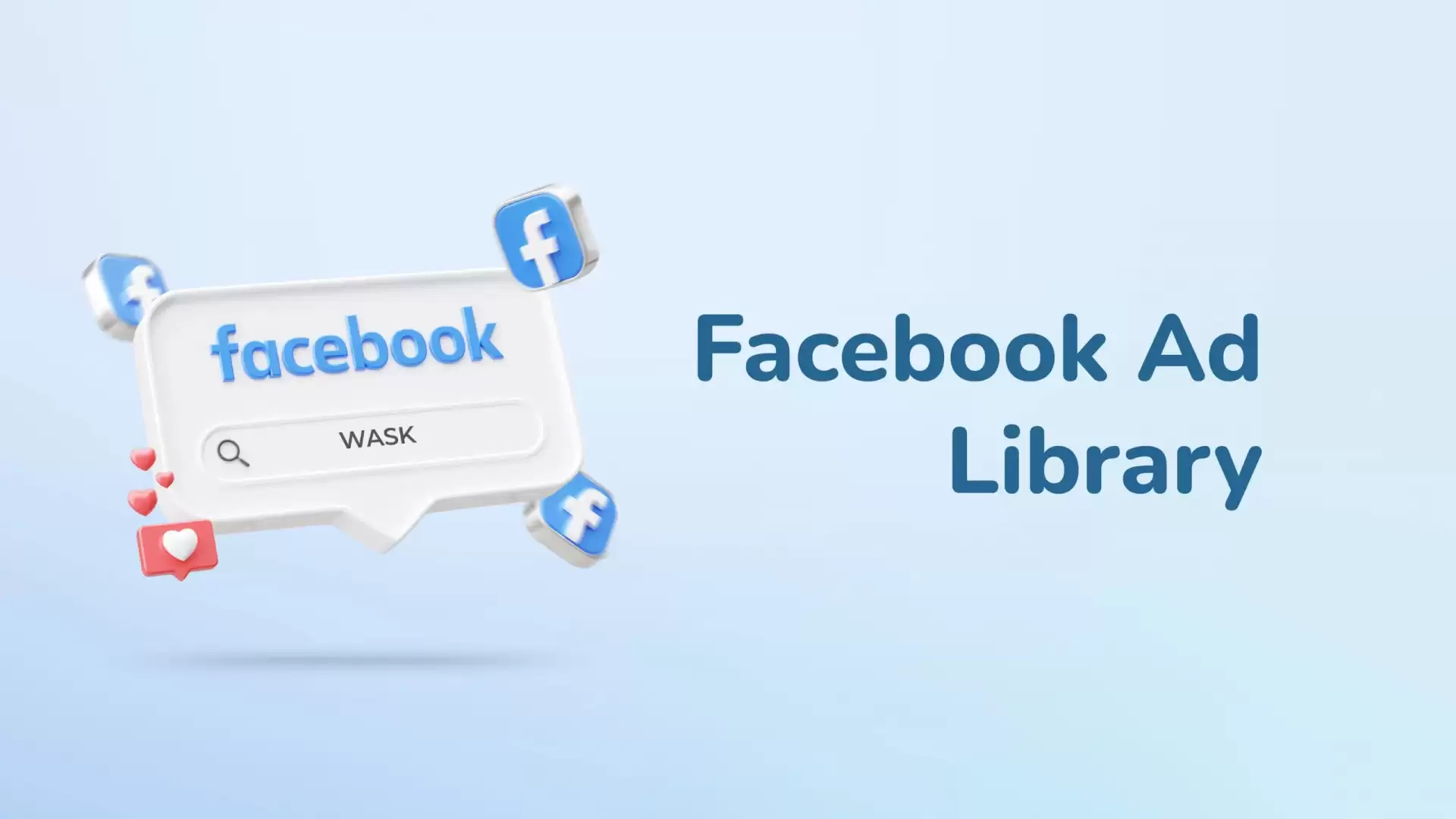
Strategically applying insights gained from the Facebook Ad Library can significantly enhance the effectiveness of your advertising campaigns. Here’s how you can adapt and innovate based on what you learn:
1, Adapting Strategies Based on Learnings
-
Incorporate Effective Elements:
- Visuals and Design: If certain types of images or graphics consistently engage audiences in your sector, consider how your own content can similarly captivate.
- Copywriting Techniques: Note the language and calls to action that drive engagement. Adjust your messaging to mirror these successful approaches, tailored to your unique brand voice.
- Ad Formats: Pay attention to whether videos, carousels, or single images are more effective. Adapt the format of your ads accordingly.
-
Test and Refine:
- Use A/B testing to compare the performance of your original strategies against new tactics inspired by your research. This can help validate the effectiveness of incorporating these new elements.
2, Innovating Based on Trends
-
Emerging Content Trends:
- Stay ahead by adopting new content trends early, such as the use of augmented reality features, interactive content, or new forms of user engagement like polls and quizzes within ads.
-
Technological Advances:
- Leverage advancements in ad technology, such as dynamic personalization tools, to tailor ads based on user behavior and preferences observed from your competitors’ successful campaigns.
-
Niche Targeting:
- Identify niche markets or under-targeted demographics that competitors might be overlooking. Tailoring content specifically for these groups can provide a competitive edge.
3, Monitoring and Continuous Improvement
-
Regularly Update Your Insights:
- Continuously monitor the Ad Library to keep up with the evolving strategies of your competitors and changes in consumer engagement patterns.
-
Feedback Loop:
- Collect and analyze customer feedback on the new strategies and directly compare them to engagement metrics before and after implementing insights from the Ad Library.
-
Adapt Rapidly:
- Be ready to quickly adapt your strategies based on both the successes and failures of your tests. The ability to pivot rapidly is crucial in the fast-paced digital advertising environment.
Using the Facebook Ad Library for strategic insight is not just about copying what works but rather understanding why certain strategies are effective and how they can be innovatively applied to your campaigns. This proactive approach ensures your advertising remains relevant, engaging, and ultimately more successful in achieving your marketing goals.
Challenges and Considerations
Navigating the complexities of the Facebook Ad Library requires a strategic approach to maximize its benefits while mitigating potential challenges:
1, Context and Relevance
- Market Specificity: What succeeds in one demographic or geographic area may not translate universally. Tailor insights gleaned from the Ad Library to fit the cultural and economic contexts of your target audience.
- Seasonal Variations: Pay attention to the timing of successful ads. A campaign that performed well during a specific season or event might not be as effective at other times.
2, Data Overload
- Prioritize Key Metrics: Focus on metrics that directly correlate to your campaign goals, such as conversion rates for sales-oriented campaigns or engagement rates for brand awareness efforts.
- Set Clear Objectives: Before diving into the data, define what success looks like for your campaigns. This helps in filtering out irrelevant data and concentrating on what truly matters for your strategy.
3, Ethical Considerations
- Transparency and Honesty: Use the transparency of the Ad Library to foster trust by being open about your advertising practices.
- Respect Privacy: Ensure that your use of data complies with privacy laws and respects user consent, avoiding strategies that could be perceived as invasive or unethical.
Conclusion
The Facebook Ad Library offers unprecedented transparency, making it an invaluable resource for marketers. By understanding its depth and breadth, you can harness this tool to not only keep up with the competition but also to set new standards in creative and effective digital advertising. Employing the best practices outlined, like considering context and managing data wisely, ensures that your use of the Ad Library contributes positively to your overall marketing strategy. This approach will help maintain the integrity of your campaigns and enhance the trust and engagement of your audience.
For more insights and updates on effective social media strategies, make sure to follow Accnice and our tutorial blog, where we share the latest and most effective content marketing tips.


